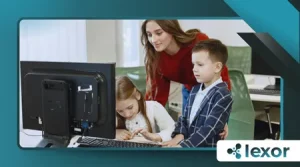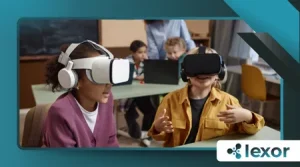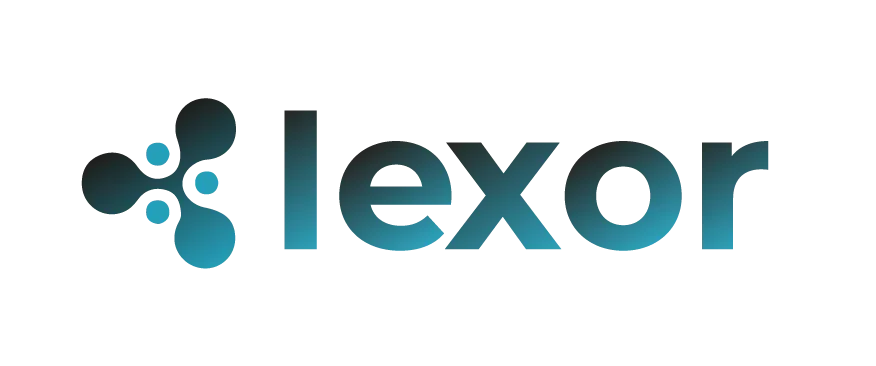How Technology Supports Special Needs Education in Early Years

The transformative power of technology in special needs education in early years is reshaping how we approach learning for children with diverse needs.
No longer confined to traditional methods, educators now harness cutting-edge tools to unlock potential in ways once deemed impossible.
From AI-driven adaptive platforms to immersive virtual reality, these innovations are not just supplementary—they are foundational.
A 2024 UNESCO report revealed that 73% of children with developmental delays show significant improvement when exposed to structured tech interventions before age six.
But technology alone isn’t the answer. Its true impact lies in how it’s integrated—thoughtfully, inclusively, and with a deep understanding of individual needs.
This isn’t about replacing teachers; it’s about empowering them with tools that make education accessible to every child.
The Digital Revolution in Early Intervention
Early intervention is the cornerstone of effective special needs education in early years. The brain’s plasticity at this stage means that targeted support can lead to lifelong benefits.
Speech delay, for instance, was once addressed primarily through one-on-one therapy. Now, apps like Otsimo use gamified exercises to reinforce language skills, turning practice into play.
Studies show that children using such apps progress 30% faster in verbal communication than those relying solely on traditional methods.
Another breakthrough is wearable tech. Devices like LeapBand encourage physical activity in children with motor challenges by turning movement into interactive games.
The result? Improved coordination and heightened engagement—proving that learning doesn’t have to happen at a desk.
++How VR Is Helping People Overcome Phobias
Yet, the most profound impact may be in early autism detection.
AI algorithms now analyze speech patterns and facial expressions in toddlers, flagging potential signs long before conventional assessments. This isn’t just innovation—it’s prevention.
Personalized Learning: Beyond One-Size-Fits-All

Traditional classrooms often struggle to accommodate neurodiverse learners, but adaptive technology is changing that.
Platforms like DreamBox use real-time analytics to adjust lesson difficulty, ensuring each child progresses at their own pace.
Take dyslexia, for example. Tools like NaturalReader convert text to speech, allowing struggling readers to absorb content without frustration.
++Best Websites for Preschool Teachers to Find Digital Resources
Meanwhile, Ghotit uses AI to predict and correct spelling errors tailored to dyslexic patterns—turning a source of shame into a solvable challenge.
But personalization goes beyond academics. Apps like MoodTools help children with emotional regulation through guided breathing exercises and cognitive behavioral techniques.
When a child feels overwhelmed, these tools offer immediate coping strategies—bridging the gap between therapy and daily life.
The future? Biometric feedback. Imagine a headset that detects a student’s stress levels and adjusts lesson intensity accordingly. This isn’t sci-fi; it’s the next frontier in special needs education in early years.
++The Role of Interactive Whiteboards in Preschool Classrooms
Assistive Tech: From Theory to Playground
For children with physical disabilities, assistive technology isn’t just helpful—it’s liberating. Consider EyeGaze, which lets students control computers with eye movements.
A child who can’t use their hands can now draw, write, and even play games independently.
Then there’s LEGO® Braille Bricks, merging tactile learning with creativity.
Blind or visually impaired children build words while developing fine motor skills—proving that play and education aren’t mutually exclusive.
Read more: Virtual Reality in Tourism: Exploring the World from Home
Social skills are another critical area. Apps like Social Stories™ use customizable narratives to teach autistic children how to navigate complex interactions, from sharing toys to handling bullies.
The result? Fewer meltdowns and more meaningful connections.
But tech’s greatest strength is its adaptability. A tablet can be a communication device, a reading tutor, or a sensory regulator—all before lunchtime.
The Data Behind the Progress
The numbers don’t lie. A 2025 Journal of Early Childhood Research study found that schools using multisensory tech saw a 40% reduction in meltdowns among students with sensory processing disorders.
| Technology | Key Benefit |
|---|---|
| Eye-tracking software | Improves focus for ADHD learners |
| VR social simulations | Reduces social anxiety |
| Haptic feedback gloves | Enhances motor skill development |
But data alone isn’t enough. Success hinges on teacher training. A well-designed app is useless if educators don’t know how to integrate it into lessons.
Ethical Considerations: Balance Over Dependency
Screens shouldn’t replace human interaction. The best tools enhance—not replace—the role of teachers, therapists, and parents.
Over-reliance on tech risks isolating children further. A child with autism might excel at iPad-based communication but struggle with face-to-face dialogue.
Check this out: The role of technology in supporting children with special needs
The solution? Hybrid approaches that blend digital and real-world interactions.
Privacy is another concern. Apps collecting behavioral data must prioritize security, especially for vulnerable users. Who owns this data? How is it used? These questions demand answers.
Breaking Down Barriers with Immersive Tech
Virtual reality (VR) is no longer just for gaming—it’s a game-changer in special needs education in early years. Children with autism, for instance, often struggle with unpredictable environments.
VR platforms like Floreo simulate real-world scenarios—crossing the street, visiting a dentist—in a controlled, repeatable setting.
A 2025 Stanford study found that autistic children who used VR social training showed a 52% improvement in recognizing facial expressions compared to traditional methods.
The immersive nature of VR doesn’t just teach skills; it builds confidence by letting children practice in a safe, judgment-free space.
Similarly, augmented reality (AR) is bridging gaps in literacy. Apps like AR Flashcards bring alphabet letters to life in 3D, helping dyslexic learners associate sounds with shapes more effectively.
For children with attention deficits, AR’s interactive layer transforms static worksheets into dynamic experiences.
The key? These tools don’t just accommodate disabilities—they leverage them, turning perceived weaknesses into engaging learning opportunities.
The Role of AI in Early Identification and Support
Artificial intelligence is revolutionizing early diagnosis, a critical factor in special needs education in early years.
Tools like Cognoa analyze speech, behavior, and play patterns through smartphone videos, flagging developmental delays with 80% accuracy—months before standard screenings.
Early detection means earlier intervention, which can alter a child’s developmental trajectory. But AI’s role doesn’t stop there.
Machine learning algorithms in apps like BrainPower adapt in real time to a child’s emotional state, offering calming strategies when frustration is detected.
Yet, ethical questions linger. Should AI diagnose conditions traditionally reserved for clinicians? How do we prevent algorithmic bias in diverse populations?
The answer lies in collaboration: AI as a first alert, not a final verdict. When paired with human expertise, these tools democratize access to support, ensuring no child slips through the cracks.
The Future: Inclusive by Design
The next wave of edtech is co-created with therapists, ensuring tools address real-world challenges. Startups like IncluEd involve special educators in development, leading to more intuitive designs.
Wearables will play a bigger role. Imagine a smartwatch that detects an impending sensory overload and alerts the teacher—preventing crises before they happen.
Global collaboration is key. Open-source platforms allow educators worldwide to share best practices, ensuring no child is left behind.
Frequently Asked Questions
**Q: Can technology replace therapists in **special needs education in early years?
A: No. Tech is a tool, not a substitute. It enhances therapy but can’t replicate human empathy and adaptability.
Q: Are these technologies affordable for all schools?
A: While costs vary, many apps offer freemium models, and nonprofits like Closing The Gap provide grants for low-income districts.
Q: How can parents ensure screen time is beneficial?
A: Set clear limits, prioritize interactive over passive use, and always align tech with therapeutic goals.
Technology in special needs education in early years isn’t just changing lives—it’s redefining what’s possible.
But its true potential lies in our hands: how we choose to wield it, refine it, and ensure it reaches every child who needs it.
